





Mar 2022
By Ezra Jacobus
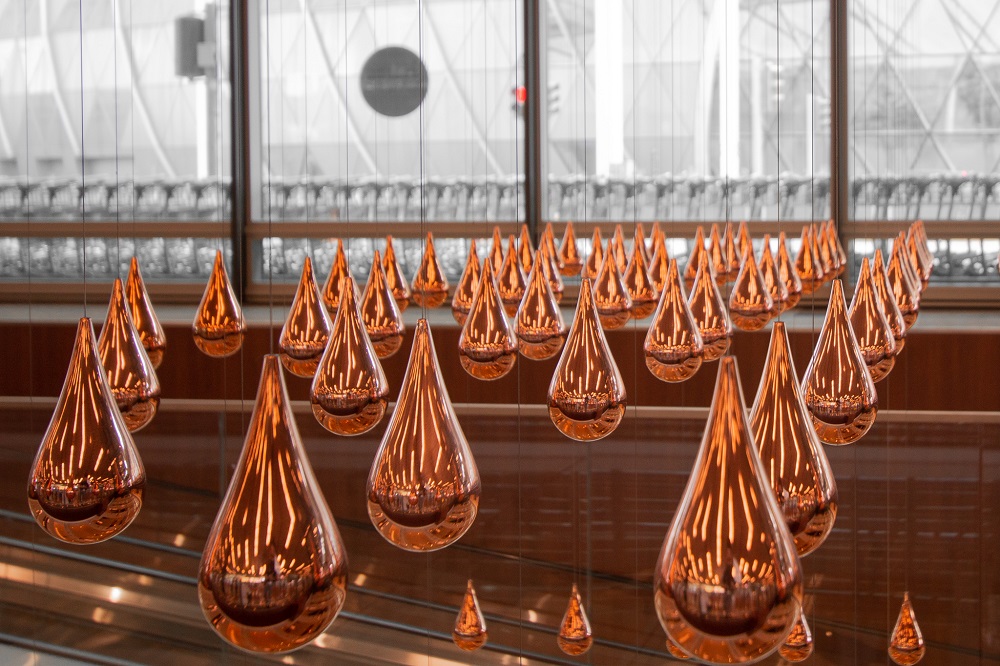


As most of the world moves to living with Covid-19 and travel gradually resumes, Changi Airport is also beginning to restart some facilities that were previously suspended during the pandemic, as we get ready to welcome more passengers. Some might remember the eye-catching Kinetic Rain sculpture at the departure check-in hall of Terminal 1. Changi Journeys goes behind the scenes to find out how this sculpture is gearing up to welcome travellers and visitors again.
Kinetic Rain’s history recapped
Existing as a pair in the departure hall, Kinetic Rain is a sculpture made of 1,216 copper-plated droplets. The droplets have been carefully programmed to form 16 different shapes, which include abstract forms of art, with some shapes giving a nod to aviation, such as an aircraft. Since starting operations in 2012, Kinetic Rain has since become synonymous with Terminal 1. Throughout the years, the artwork has fascinated travellers and visitors, thanks to its graceful and calming movements.
Back during its design stage, the sculpture was the result of the combined efforts of artists, programmers and technologists. Designers constructed three-dimensional models which were animated by hand. Following this step, the patterns were then fed into a computer programme that controls the motors which is responsible for the movement of each droplet attached to it. An encoder built into the motors consistently tracks the exact position of each droplet.
Preps to restart Kinetic Rain
The moving sculpture was put to a pause in April 2020 when the Covid-19 pandemic hit Singapore and passenger movement slowed drastically. Nearly two years have passed since. As preparation to get the sculptures running again starts, proper checks need to be conducted on the sculpture for safety, and to ensure that it can be up and running smoothly, just like it did on the first day of its public debut.
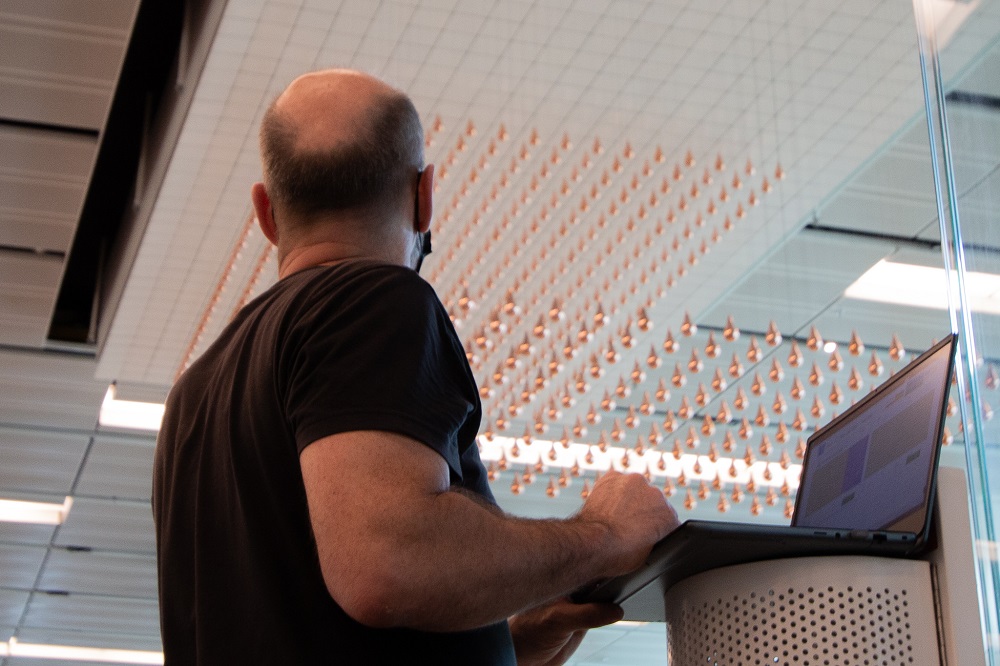


The Kinetic Rain project manager testing out the different shapes formed by the droplets using computer software after a hiatus of almost two years
Before the pandemic, the Kinetic Rain undergoes three rounds of maintenance in a year - two minor checks and a major one which involves four to five days of thorough checks by several workers. These checks were suspended during the last two years, when the moving sculpture was paused.
Hence before restarting the sculpture again, the Kinetic Rain had to be lowered from the ceiling for a major round of maintenance, to check and ensure that all parts are working well and in good condition. Each part of the ceiling mechanism had to be examined to prevent potential power trips and disruptions.
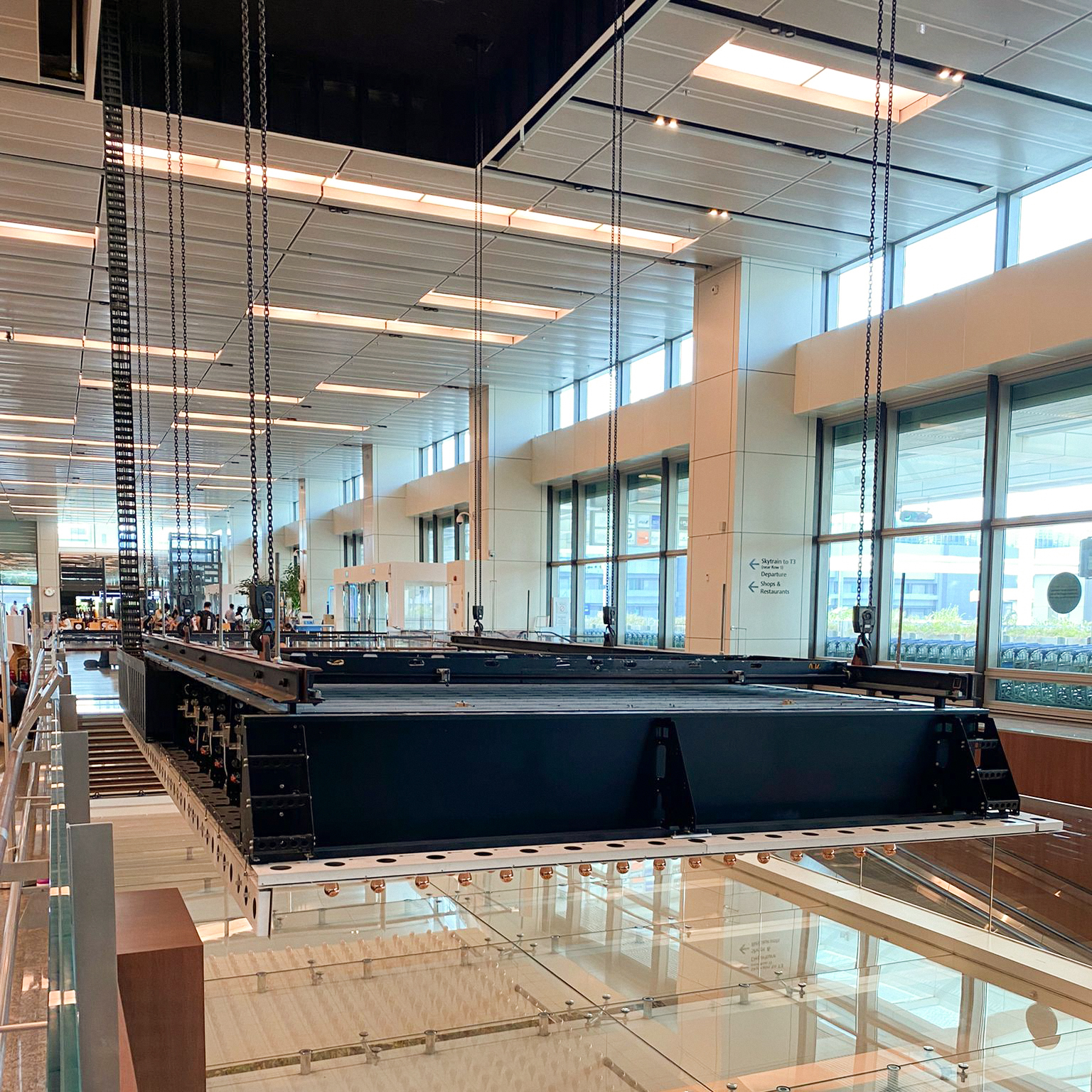


The sculpture was lowered from the ceiling for manual checks on all the motor components
Holger Frey, project manager from MKT engineering GmbH & Co. KG, returned to Singapore to personally conduct the maintenance and safety checks on the moving artwork. He explained to Daniel Foo, Senior Manager, Design Management, that each droplet will be carefully monitored to ensure that they are working well, since it affects the overall shape that the droplets unanimously create.
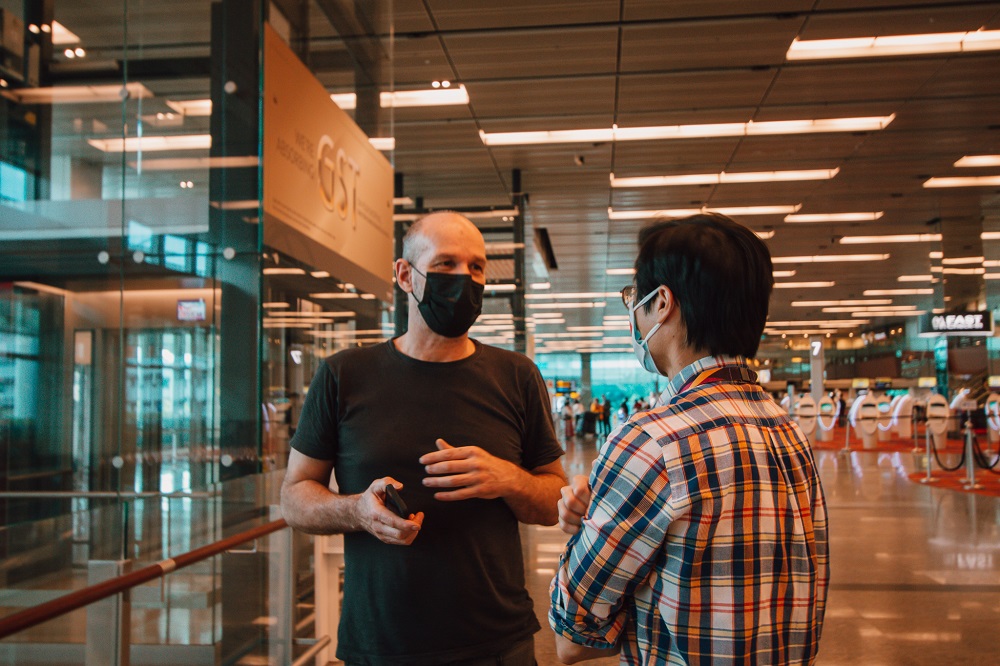


The project manager, Holger Frey, discussing the sculpture’s maintenance process with Daniel Foo
Daniel Foo went on to share with Changi Journeys, “We are excited to re-start this installation to enhance our passengers’ travel experience once again. The Kinetic Rain artwork installation is reminiscent of the old Mylar Cords, the circular curtain of water that was three-storeys high, in Terminal 1.”
“Back then, the creative brief given to the designers was to create a sculpture that was able to link back to Terminal 1's illustrious past, but in a more modern and contemporary way, and that was how the idea of the Kinetic Rain was conceptualised and implemented,” added Daniel.
Besides Kinetic Rain, Changi Airport Group (CAG) will also be gradually restarting more facilities in the terminals, such as the Rooftop Pool at Aerotel in Terminal 1’s transit hotel, so passengers can look forward to enjoying some time in a jacuzzi or a drink at the bar by the pool, before their next flight!
Other Articles
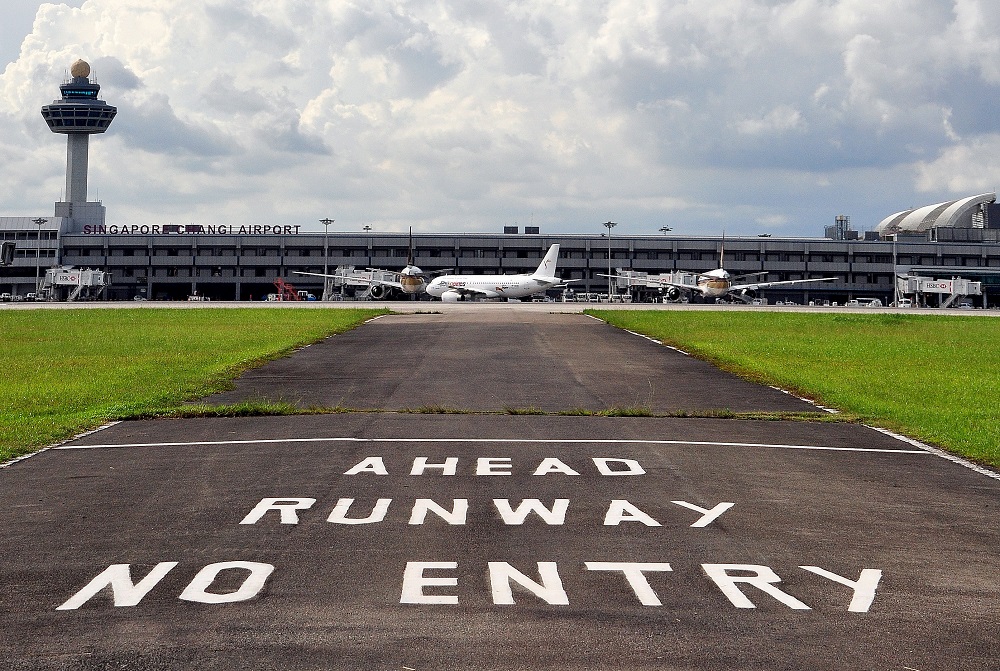
Enhancing aircraft safety through real-time runway surface condition report
Changi Airport has operationalised a new runway condition reporting system which can automatically assess and relay any change in runway surface characteristics to air traffic controllers and pilots in real-time.
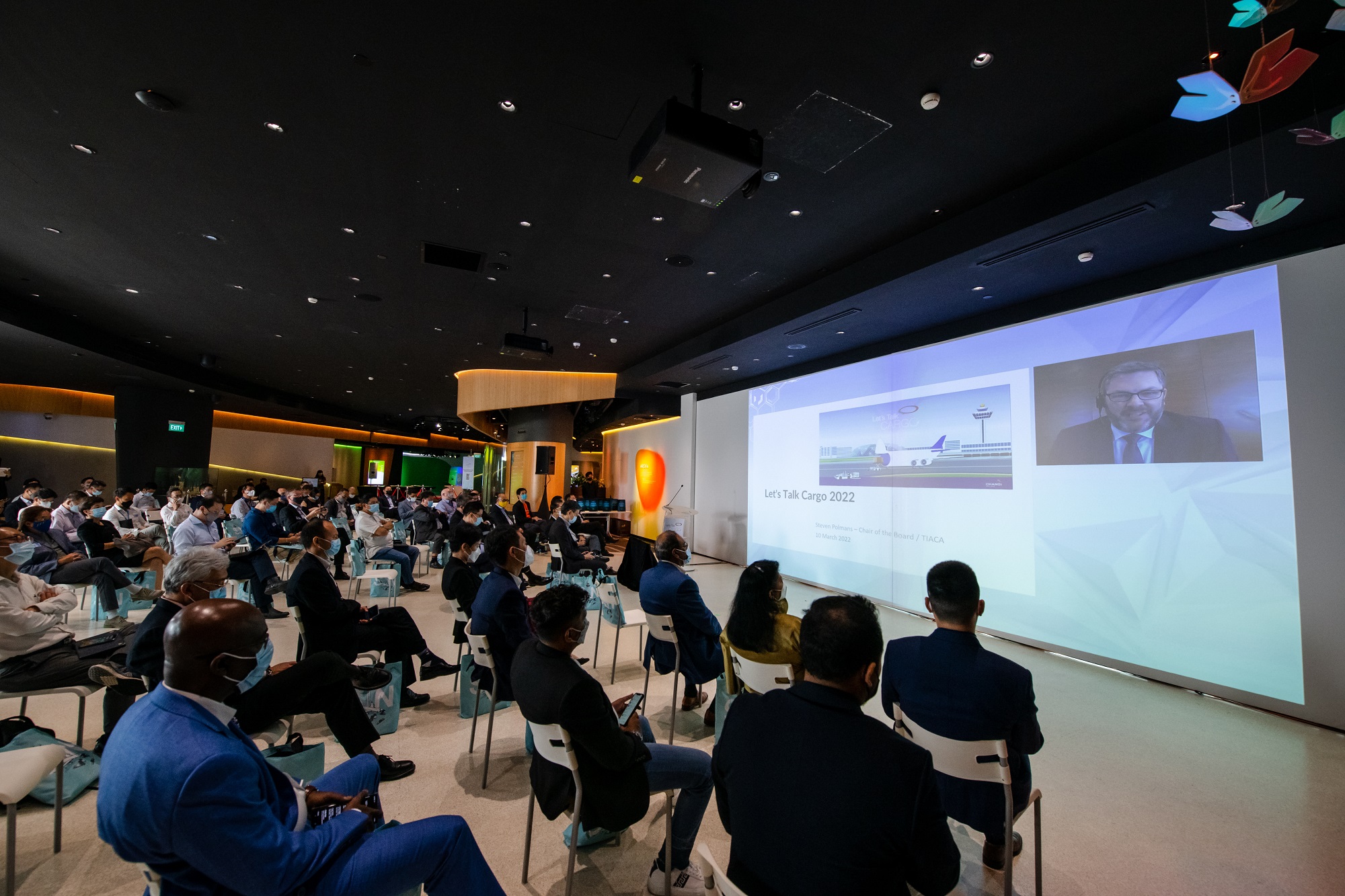
Recognising airlines’ contribution to restore Changi’s cargo network
CAG organised a sharing session and appreciation ceremony to acknowledge airline partners for their contributions towards restoring Changi’s air cargo network.
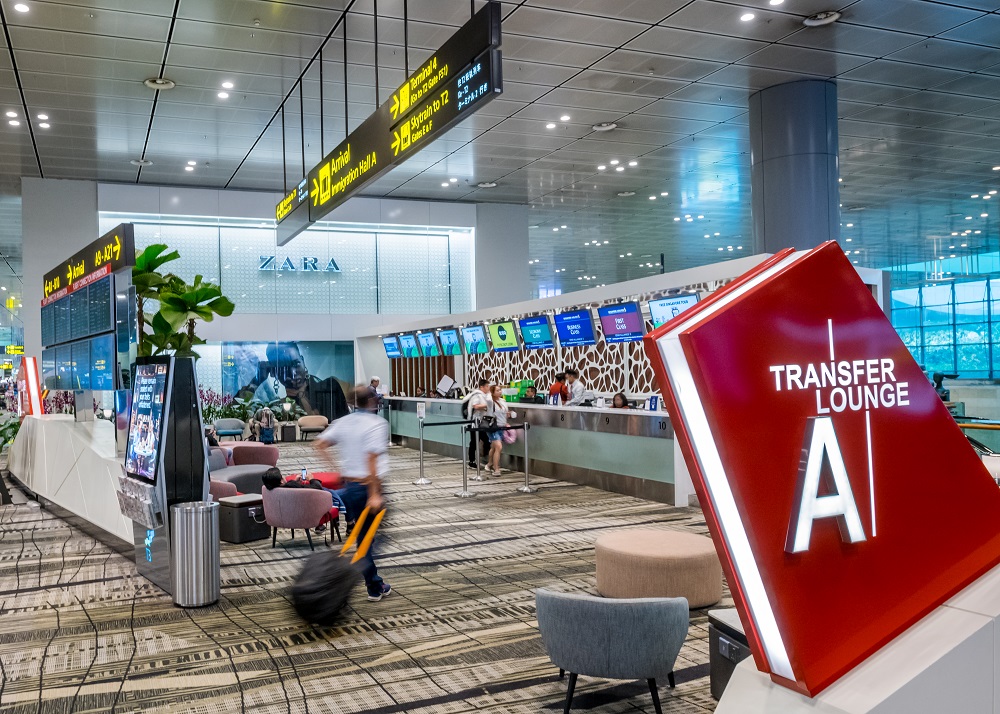
Simplifying travel arrangements to rebuild the Changi air hub
Gradual relaxation of measures will enable the airport to optimise handling capacity and ensure that air travel remains safe, while at the same time, restore the Changi Experience that it is known for.

